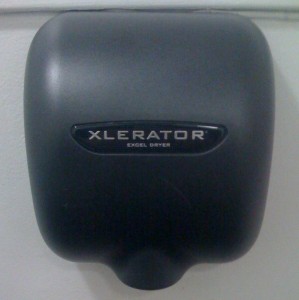
NetApp and Microsoft saturated a 10 Gb Ethernet link - can everyone else?
Along with many tidbits about storage advances in Windows Server 2008 and 2008 R2, this WinHEC presentation by Microsoft’s Suzanne Morgan demonstrated that the combination of the Windows iSCSI Initiator and NetApp FAS 3070 filer could saturate a 10 Gb Ethernet link. How many other storage arrays can do that?
The configuration tested was an IBM x3550 with dual 2 GHz CPUs, 4 GB of RAM, and an Intel 82598 adapter. This is not a special server – in fact, it’s pretty low-end! The connection was tuned with RSS, NetDMA, LRO, LSO, and jumbo frames and maxed out over 4 MCS connections per second. I’m not sure what kind of access they were doing (I’ll ask Suzanne), but it’s pretty impressive that the NetApp Filer could push 1,174 megabytes per second!
So I have a simple question for all of the storage vendors in the house: Can your array saturate a 10 GbE link? I am not asking for a complex performance test or maximum performance claims, just a simple yes or no, along with at least a bit of supporting data about the configuration and performance. Maybe duplicate the setup from that Microsoft slide.
I am not trying to suggest that this kind of performance is impossible, that NetApp is unique or special, or to trap anyone into a blog war. I am just curious about the performance capabilities of the various iSCSI targets out there!


Axstor has been shipping 10Gb for more than 2 years in the form of the Axstor Ai-4000 and the Axstor Ai-5000 series iSCSI arrays and has been able to sustain more than 1,160 MB/s from a single 10Gb port using IOmeter when testing sequential reads.
Axstor has been shipping 10Gb for more than 2 years in the form of the Axstor Ai-4000 and the Axstor Ai-5000 series iSCSI arrays and has been able to sustain more than 1,160 MB/s from a single 10Gb port using IOmeter when testing sequential reads.
[…] is simply not the case. The fastest SAN I ever saw was based on iSCSI, and Microsoft demonstrated wire-speed iSCSI over 10 Gb Ethernet in March. I never saw a Fibre Channel SAN (even an 8 Gb/s one) push over a gigabyte per second over a single […]
[…] March, Microsoft and Intel demonstrated that the combination of Windows Server 2008 R2 and the Xeon 5500 could saturate a 10 GbE, pushing […]
[…] Nevertheless, there is plenty of evidence to suggest that iSCSI performance is impressive. In February Frank Berry wrote an article about how Intel and Microsoft are tweaking iSCSI for enterprise applications, improving CPU efficiency as well as blasting through some very impressive IOPS numbers. Steven Foskett has a very interesting article on on how it was done and rightfully asks the more important question, can your storage handle the truth? […]
[…] Nevertheless, there is plenty of evidence to suggest that iSCSI performance is impressive. In February Frank Berry wrote an article about how Intel and Microsoft are tweaking iSCSI for enterprise applications, improving CPU efficiency as well as blasting through some very impressive IOPS numbers. Steven Foskett has a very interesting article on on how it was done and rightfully asks the more important question, can your storage handle the truth? […]